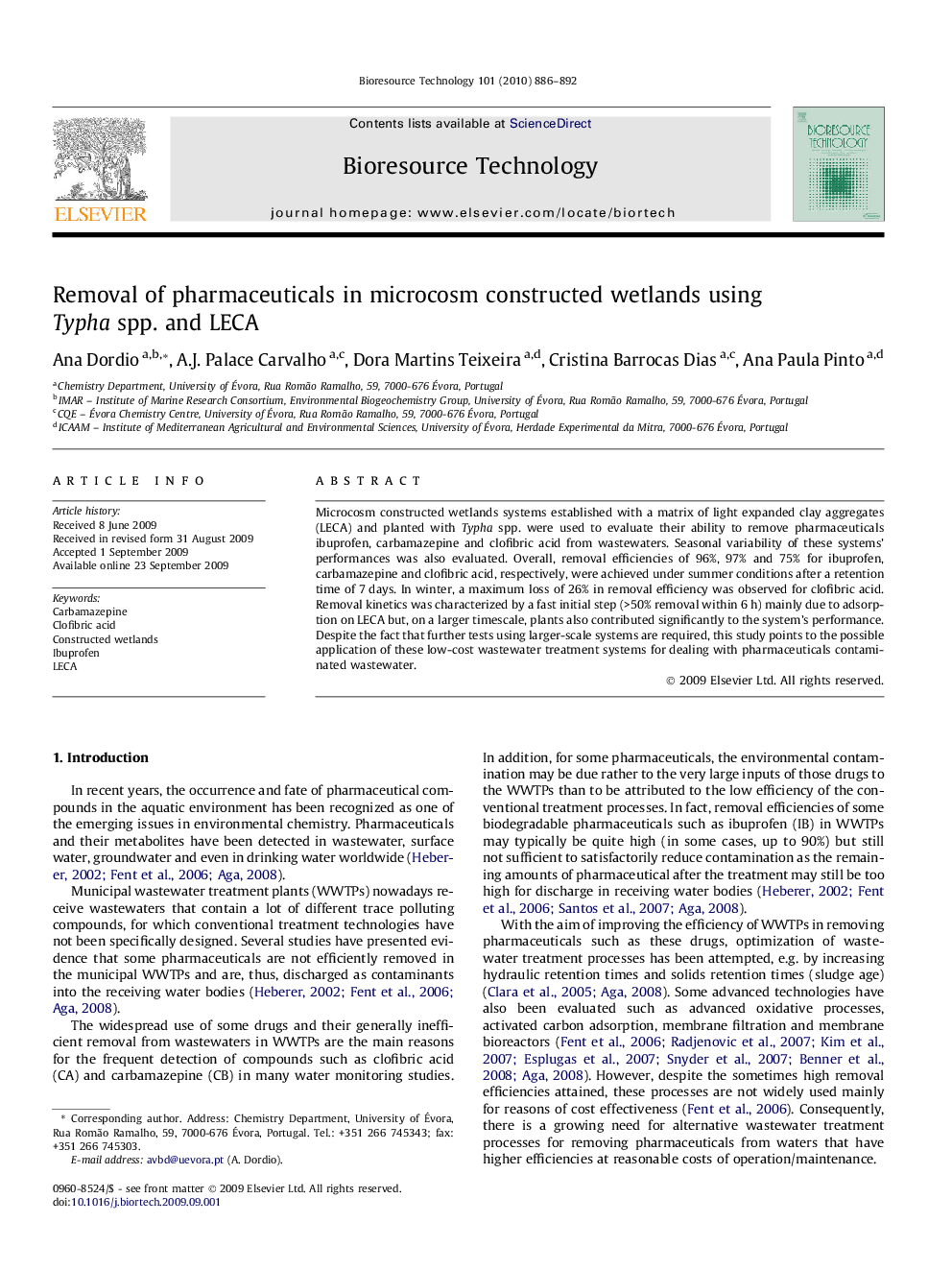| Article ID | Journal | Published Year | Pages | File Type |
|---|---|---|---|---|
| 684053 | Bioresource Technology | 2010 | 7 Pages |
Microcosm constructed wetlands systems established with a matrix of light expanded clay aggregates (LECA) and planted with Typha spp. were used to evaluate their ability to remove pharmaceuticals ibuprofen, carbamazepine and clofibric acid from wastewaters. Seasonal variability of these systems’ performances was also evaluated. Overall, removal efficiencies of 96%, 97% and 75% for ibuprofen, carbamazepine and clofibric acid, respectively, were achieved under summer conditions after a retention time of 7 days. In winter, a maximum loss of 26% in removal efficiency was observed for clofibric acid. Removal kinetics was characterized by a fast initial step (>50% removal within 6 h) mainly due to adsorption on LECA but, on a larger timescale, plants also contributed significantly to the system’s performance. Despite the fact that further tests using larger-scale systems are required, this study points to the possible application of these low-cost wastewater treatment systems for dealing with pharmaceuticals contaminated wastewater.
